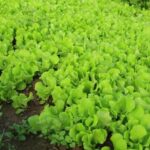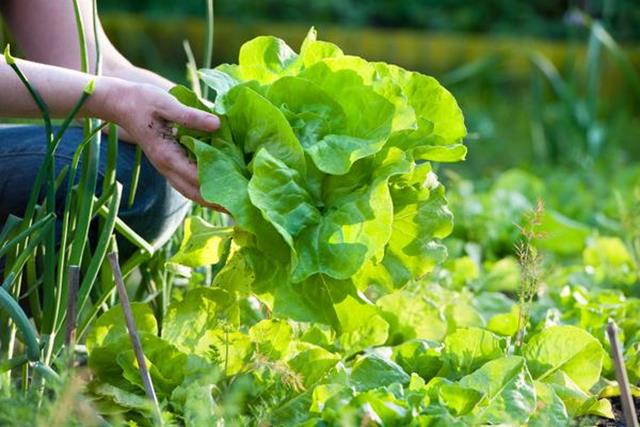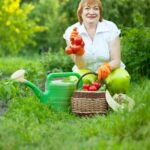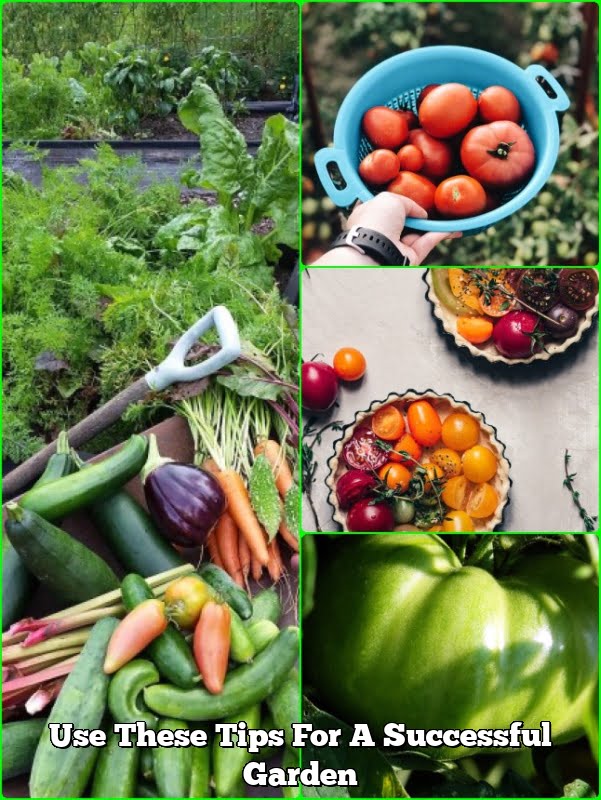Container gardening has become a popular and practical way for people to grow their own vegetables, even in limited space. The trend of successful container gardening vegetables has been on the rise, as more individuals are discovering the convenience and benefits of growing their own produce at home.
In this article, we will explore the ins and outs of container gardening for vegetables, including the best containers to use, selecting the right soil, choosing the best vegetables to grow, and tips for watering, fertilizing, and dealing with pests and diseases.
Container gardening offers a flexible and accessible way for people to cultivate a variety of vegetables without needing a traditional garden plot. Whether you live in an urban apartment or have limited outdoor space, container gardening can provide a viable solution for growing fresh produce. By implementing the right techniques and strategies, anyone can have a successful container garden full of delicious and nutritious vegetables.
In this comprehensive guide, we will delve into the key aspects of successful container gardening vegetables. From understanding the benefits of container gardening to learning about specific containers suitable for vegetable cultivation, we aim to equip readers with the knowledge and tools needed to create their thriving container gardens. Whether you’re new to gardening or looking to expand your horticultural pursuits, this article will provide valuable insights for growing your favorite veggies in containers.
Benefits of Container Gardening for Growing Vegetables
Container gardening offers a multitude of benefits for those looking to grow their own vegetables in a limited space. Whether you have a small balcony, patio, or even just a sunny windowsill, container gardening can provide a convenient and rewarding way to produce your own fresh produce.
Space-Saving Convenience
One of the primary advantages of container gardening is the ability to maximize limited space. For urban dwellers or those with small outdoor areas, containers allow you to make the most of any available sunlight by positioning them strategically. This means that even if you only have a tiny outdoor space, you can still enjoy the satisfaction of growing your own vegetables.
Easy Maintenance and Mobility
Container gardening also offers the benefit of easy maintenance and mobility. Unlike traditional garden beds, containers can be moved around to take advantage of different light conditions or to protect plants from harsh weather. They also require less bending and stooping, making them an accessible option for those with physical limitations. Additionally, containers tend to have fewer issues with weeds and pests compared to traditional gardens, resulting in less maintenance overall.
Aesthetically Pleasing
Another advantage of container gardening is its aesthetic appeal. With an endless variety of container options available in different colors, shapes, and sizes, you can create a visually pleasing display while simultaneously growing your own food. This makes container gardening an attractive option for those who want both practicality and beauty in their outdoor spaces.
Best Containers for Growing Vegetables
When it comes to successful container gardening vegetables, choosing the right containers is essential. The type of container you select can have a significant impact on the growth and health of your vegetable plants. Here are some of the best containers for growing vegetables in a container garden.
Large Plastic Pots
Large plastic pots are an excellent choice for growing vegetables in containers. They are lightweight, durable, and come in various sizes to accommodate different types of vegetables. Additionally, plastic pots retain moisture well, which can be beneficial for vegetables that require consistent watering.
Fabric Grow Bags
Fabric grow bags have gained popularity among container gardeners for their superior drainage and aeration properties. These bags prevent overwatering and root rot while promoting healthy root development. They are also easy to store and transport, making them a versatile option for growing vegetables in small spaces.
Self-Watering Containers
Self-watering containers are ideal for busy gardeners or those who may struggle to maintain consistent watering schedules. These containers have a built-in reservoir that allows plants to draw water as needed, reducing the risk of underwatering or overwatering. They are particularly useful for thirsty vegetables such as tomatoes and peppers.
By choosing the right containers for your vegetable garden, you can set yourself up for success when it comes to container gardening. Consider the specific needs of your chosen vegetables and the space available to determine which type of container will work best for your unique gardening situation.
Choosing the Right Soil for Successful Container Gardening
When it comes to container gardening, choosing the right soil is crucial for the success of your vegetable garden. The type of soil you use can directly impact the growth and yield of your vegetables. Here are some tips for selecting the best soil for successful container gardening vegetables:
- Use a high-quality potting mix: Look for a potting mix specifically designed for containers. These mixes are lightweight, well-draining, and provide the right balance of nutrients for vegetable plants.
- Avoid using garden soil: Garden soil can become compacted in containers, leading to poor drainage and limited root growth. It may also contain weed seeds and pathogens that can harm your vegetable plants.
- Consider adding compost: To improve the fertility and structure of your container soil, consider mixing in some compost. Compost helps with moisture retention and provides essential nutrients for healthy plant growth.
In addition to choosing the right soil, it’s important to ensure proper drainage in your containers. Good drainage is vital for preventing waterlogged soil, which can lead to root rot and other issues. Select pots with drainage holes at the bottom or add a layer of gravel or stones before adding the potting mix.
By using high-quality potting mix, avoiding garden soil, incorporating compost, and ensuring good drainage, you can create an ideal growing environment for successful container gardening vegetables. Paying attention to the quality of your soil will set the foundation for healthy and productive vegetable plants in containers.
Selecting the Best Vegetables for Container Gardening
When it comes to selecting the best vegetables for successful container gardening, there are a variety of options that are well-suited for this type of growing environment. Here are some vegetables that thrive in containers:
- Tomatoes: Tomatoes are one of the most popular choices for container gardening. You can choose from a variety of smaller tomato varieties such as cherry or grape tomatoes, which are perfect for growing in pots.
- Peppers: Both sweet and hot peppers do well in containers, making them a great choice for small space gardening. Look for compact varieties that are ideal for confined spaces.
- Salad Greens: Vegetables like lettuce, spinach, and arugula are excellent options for container gardening. These greens have shallow root systems and can be harvested regularly for fresh salads.
In addition to these popular options, other vegetables such as cucumbers, beans, and herbs like basil and parsley also do well in containers. When selecting vegetables for your container garden, consider the size of the plant and its root system. Compact and dwarf varieties tend to perform best in containers.
It’s important to remember that not all vegetables thrive in containers, so it’s essential to do some research before planting. Consider factors such as the amount of sunlight your container garden receives and the climate in your area when choosing which vegetables to grow. With the right selection of vegetables, you can create a thriving container garden that provides a bountiful harvest throughout the growing season.
Tips for Watering and Fertilizing Container Vegetables
When it comes to successful container gardening vegetables, proper watering and fertilizing play a crucial role in the health and yield of your plants. Container gardening has its own set of requirements, and it’s important to understand how to effectively water and fertilize vegetables grown in containers.
One important tip for watering container vegetables is to ensure that the soil is consistently moist, but not waterlogged. This can be achieved by using a watering can with a fine spout or a drip irrigation system to deliver water directly to the base of the plants. It’s also important to monitor the moisture level regularly, especially during hot weather, as containers tend to dry out more quickly than garden beds.
In terms of fertilizing container vegetables, using a high-quality organic fertilizer is recommended. Slow-release granular fertilizers can be added to the soil at the beginning of the growing season, providing nutrients over an extended period. Additionally, liquid fertilizer can be applied every few weeks during the growing season to ensure that the plants are receiving adequate nutrition for healthy growth and production.
Another tip for successful container gardening vegetables is to be mindful of leaching from frequent watering and rainfall. Nutrients can be easily washed out of the containers, so regular fertilization may be necessary to replenish essential elements for plant growth. By following these tips for watering and fertilizing container vegetables, you can help ensure a bountiful harvest from your container garden.
Dealing With Pest and Disease Issues in Container Gardening
One of the biggest challenges in successful container gardening vegetables is managing pest and disease issues. Pests like aphids, caterpillars, and mites can quickly wreak havoc on your carefully tended plants, while diseases like powdery mildew and blight can also pose a serious threat. Luckily, there are several strategies that can help you prevent and manage these problems to ensure a bountiful harvest from your container garden.
First and foremost, it’s important to practice good sanitation in your container garden. Regularly remove any dead or decaying plant material, as well as any fallen leaves or fruit. These can harbor pests and diseases, so keeping your containers clean can go a long way in preventing problems before they start. Additionally, consider using natural pest control methods such as introducing beneficial insects like ladybugs or lacewings to keep pest populations in check.
Another key strategy for dealing with pest and disease issues in container gardening is to choose disease-resistant vegetable varieties whenever possible. Many plant breeders have developed varieties that are naturally resistant to common diseases, making them less susceptible to infection. When selecting vegetables for your container garden, look for labels indicating disease resistance, and prioritize those varieties in your planting choices.
| Pest and Disease Management Strategies | Benefits |
|---|---|
| Practice good sanitation | Prevents pests and diseases from taking hold |
| Use natural pest control | Minimizes the need for chemical pesticides |
| Choose disease-resistant vegetable varieties | Reduces susceptibility to common diseases |
Harvesting and Maintaining a Successful Container Garden
Once you have successfully planted and cared for your container garden, it’s time to reap the rewards of your labor. Harvesting your vegetables at the right time is crucial for enjoying them at their peak flavor and freshness. Each type of vegetable will have its ideal harvesting time, so be sure to do some research on the specific vegetables you’ve chosen to grow in your containers.
Regular maintenance is also important for the continued success of your container garden. This includes monitoring the health of your plants, checking for any signs of pests or disease, and ensuring they are getting the right amount of water and sunlight. Additionally, regular pruning and deadheading can help promote healthy growth and prolong the harvest season for many vegetables.
Finally, as one growing season ends, it’s essential to prepare for the next. Consider rotating your crops to prevent soil depletion and disease build-up in your containers. You may also want to amend or replace the soil to ensure it stays nutrient-rich for future plantings. Proper storage of your containers during the off-season is also important to protect them from damage and prolong their lifespan.
| Vegetable | Harvest Time |
|---|---|
| Tomatoes | When fully colored |
| Lettuce | When leaves reach desired size |
| Zucchini | 6-8 inches long |
| Bell Peppers | When firm and green (or desired color) |
Conclusion
In conclusion, container gardening is a great option for growing vegetables, especially for those with limited outdoor space. By using the right containers and soil, choosing the appropriate vegetables, and following proper watering and fertilizing techniques, successful container gardening vegetables can be achieved. It offers numerous benefits such as easy maintenance, better control over soil quality, and the ability to move plants to optimize sunlight exposure.
When it comes to selecting the best containers for growing vegetables, it’s important to consider factors such as size, drainage, and material. Additionally, using the right soil mix is crucial for successful container gardening. A well-draining potting mix with adequate nutrients is essential for healthy vegetable growth.
Choosing the right vegetables for container gardening is also key. Compact varieties that don’t require a lot of space are ideal for containers. Some popular choices include tomatoes, peppers, lettuce, and herbs. By following these tips and guidelines, anyone can achieve a flourishing container garden full of delicious and nutritious vegetables.
Frequently Asked Questions
What Vegetables Work Well in Container Gardens?
Many types of vegetables work well in container gardens, including tomatoes, peppers, lettuce, spinach, cucumbers, radishes, and herbs like basil and parsley. These plants don’t require a lot of space and can thrive in containers.
What Is the Easiest Vegetable to Grow in a Container?
The easiest vegetable to grow in a container is usually lettuce. Lettuce doesn’t need a lot of room to grow and it prefers cooler temperatures, making it ideal for container gardening. With regular watering and some sunlight, you can easily grow your own lettuce at home.
How Many Vegetables Can I Grow in a 5 Gallon Container?
In a 5-gallon container, you can typically grow one larger vegetable plant such as a tomato or pepper. Alternatively, you could also plant several smaller plants like lettuce or herbs in the same container.
It’s important to consider the mature size of the plants and their growth habits when planting in containers to ensure they have enough space to thrive.

If you’re looking to get into vegetable gardening, or are just looking for some tips on how to make your current garden better, then you’ve come to the right place! My name is Ethel and I have been gardening for years. In this blog, I’m going to share with you some of my best tips on how to create a successful vegetable garden.





